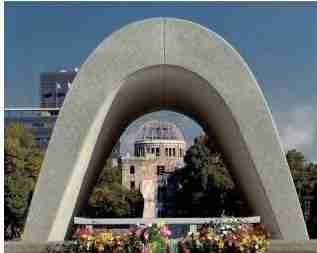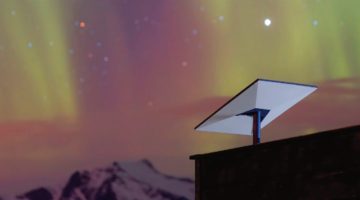By BRADLEY KLAPPER
HIROSHIMA, Japan – U.S. Secretary of State John Kerry visited the revered memorial to Hiroshima’s atomic bombing, delivering a message of peace and hope for a nuclear-free world seven decades after the United States used the weapon for the first time in history and killed 140,000 Japanese. Kerry on Monday became the most senior American official to travel to city, touring its peace museum with other foreign ministers of the Group of Seven industrialized nations and laying a wreath at the adjoining park’s stone-arched monument, with the exposed steel beams of Hiroshima’s iconic ABomb Dome in the distance.
The otherwise somber occasion was lifted by the presence of about 800 Japanese schoolchildren waving flags of the G7 nations, including that of the United States, and cheering as the ministers walked past.
Kerry didn’t speak publicly at the ceremony, though could be seen with his arm around Japanese Foreign Minister Fumio Kishida, a Hiroshima native, and whispering in his ear. The ministers departed with origami cranes in their national colors around their necks, Kerry draped in red, white and blue. “Everyone in the world should see and feel the power of this memorial,” Kerry wrote in the museum’s guest book. “It is a stark, harsh, compelling reminder not only of our obligation to end the threat of nuclear weapons, but to rededicate all our effort to avoid war itself.”
“War must be the last resort – never the first choice,” he added. “This memorial compels us all to redouble our efforts to change the world, to find peace and build the future so yearned for by citizens everywhere.”
Kerry’s appearance, just footsteps away from Ground Zero, completed an evolution for the United States, whose leaders avoided the city for many years because of political sensitivities.
No serving U.S. president has visited the site, and it took 65 years for a U.S. ambassador to attend Hiroshima’s annual memorial service. Many Americans believe the dropping of atomic bombs here on Aug. 6, 1945, and on the Japanese city of Nagasaki three days later were justified and hastened the end of the war.
Nevertheless, Japanese survivors’ groups have campaigned for decades to bring leaders from the U.S. and other nuclear powers to see Hiroshima’s scars as part of a grassroots movement to abolish nuclear weapons.
As Kerry expressed interest, neither Japanese government officials nor survivor groups pressed for the U.S. to say sorry. And a senior American official traveling with Kerry said no apology would occur. “I don’t think it is something absolutely necessary when we think of the future of the world.”










No Comment